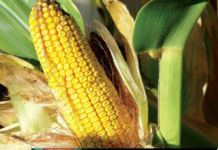
Data shows the severity of the recession’s impact on Kansas’ forest industry caused by lack of consumer demand.
MANHATTAN, Kan. – In the past decade, Kansas has seen hazardous ice storms, devastating drought and soaring grain prices, which make deforestation increasingly likely. However, the reductions seen in the state’s forest products industries aren’t linked to a physical loss in forestland, but rather a loss in consumer demand.
Blame is cast to the Great Recession, which may have only officially lasted from December 2007 to June 2009, but its impact on the economy and the entire timber industry can still be seen today.
A report recently released by the U.S. Forest Service (USFS), titled “Kansas Timber Industry,” indicates the status of the industry in 2009 and tracks changes from the last inventory conducted in 2003.
In 2009, an almost 50 percent reduction in the amount of timber processed by mills occurred—a loss of about 1.6 million cubic feet. Kansas’ sawmill receipts showed a decrease of 65 percent since 2003.
It would be easy to blame this trend on the burst of the housing bubble that began the recession or the country’s shift toward electronic communication and record keeping.
But, Kansas is primarily a hardwood state, meaning the types of trees harvested such as walnut, oak and cottonwood, don’t serve the same purpose as the softwoods used in construction and paper manufacturing.
Most timber processed locally in Kansas is used for pallets and crates, but the higher quality logs are exported to other states such as Missouri or sent overseas to be made into furniture.
Demand for forest products
Brian Briggeman, a Kansas State University associate professor of agricultural economics, explained the situation as one of the many real-life examples of supply and demand.
During the recession, Briggeman said the nation saw surging unemployment rates, shrinking real wages and capped salaries.
“If you can’t afford a house, how can you afford furniture to put in it?” said Briggeman, who explained that the steep drop in disposable income affected consumer demand, and people began searching for cheaper substitutes.
Instead of going to their local vendor to buy the high-quality solid oak furniture like many of their parents and grandparents once had, consumers turned to places such as IKEA and Wal-Mart to save money.
“The question has become, will demand ever fully come back for furniture?” Briggeman said. “We have improved, but I wouldn’t say we’re to a point where the U.S. consumer is ready to go out and spend like they did before the recession.”
Available supply
According to the USFS report, in 2009 there were 2.27 million acres of forestland in Kansas. Even with a million cubic feet harvested annually, an average of almost 15 cubic feet of annual net growth per acre remains in Kansas’ forests, suggesting that the number of trees is not the issue.
Because most of the state’s forestland is privately owned, the problem now lies in the landowners’ willingness to harvest, which is most often dictated by market price.
Charles Barden, state extension forester for K-State Research and Extension, said part of the problem began before the recession fully hit.
“Like so many other things, there was a bubble in the hardwood industry,” he explained. “China was buying every walnut log they could lay their hands on at the time. There were reports of buyers literally going out and buying logs as small as 14 inches in diameter, which is kind of a small log, but people were happy because they could finally sell such a small log for a good price.”
Barden compared this situation to a rancher that can either sell a 400-pound calf now, or wait until that calf grows to be 800 pounds. The larger the diameter, the more money the log is worth.
When the recession hit, international buyers no longer wanted to pay high dollar for raw materials to manufacture a product they couldn’t sell back to the United States. Consequently, landowners stopped harvesting their forestland.
“Working in the woods can be expensive and dangerous,” Barden said. “What happens is you can always sell a log, but the landowners decide if they want to sell that log for $50 when they remember their neighbor sold one the same size for $500 a couple years ago. So, they don’t sell it, it keeps getting bigger and they wait for the market to come up.”
Like consumer demand, the forest products industry has been slow to recover, but it is improving. As consumers become more active, so will the markets.
“Luckily the trees we didn’t cut are still growing,” Barden said. “They are a long-term crop. Demand has already started to slowly come back, and we are seeing more walnut being harvested and more logs being cut.”
Barden’s message to the landowners waiting for higher prices is simple: it’s ok to wait, but be sure to provide proper tree management to promote good health and growth of their tree crop. He also encourages contacting the Kansas Forest Service if anyone has questions or needs assistance developing a marketing plan for their timber harvest.
For more information about the Kansas timber industry, landowners can visit the Kansas Forest Service website, www.kansasforests.org
Story by: Kaitlin Morgan



